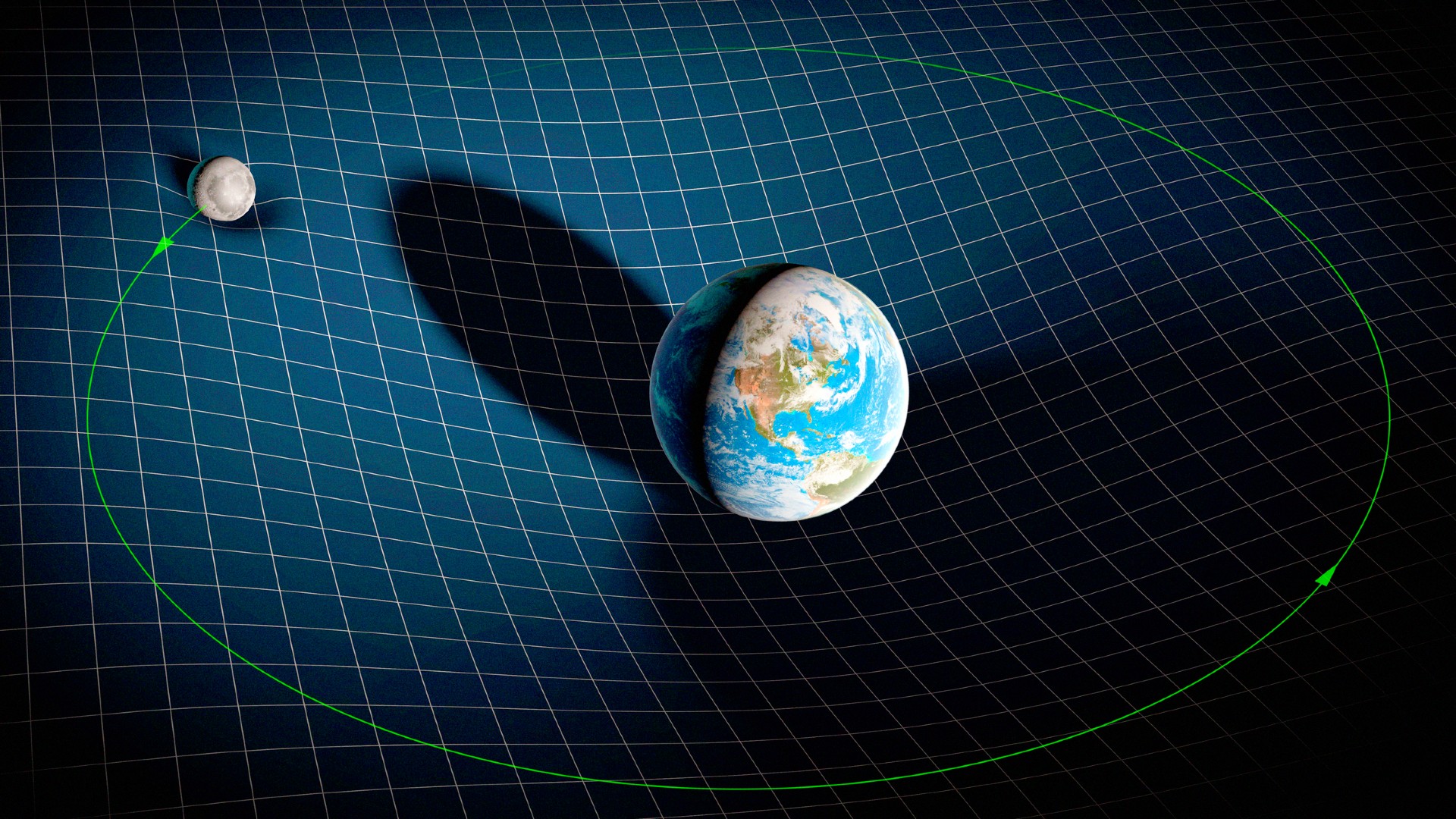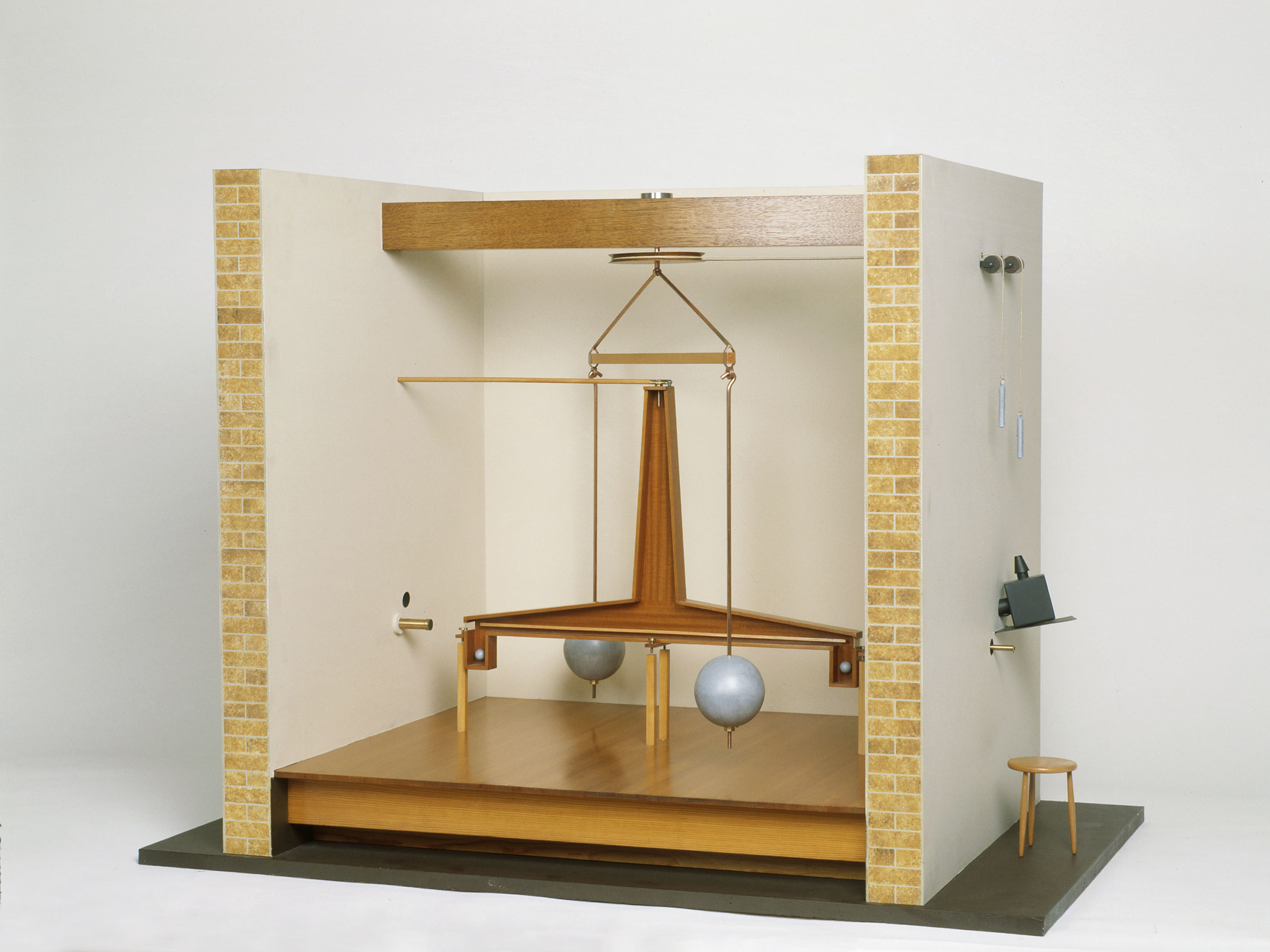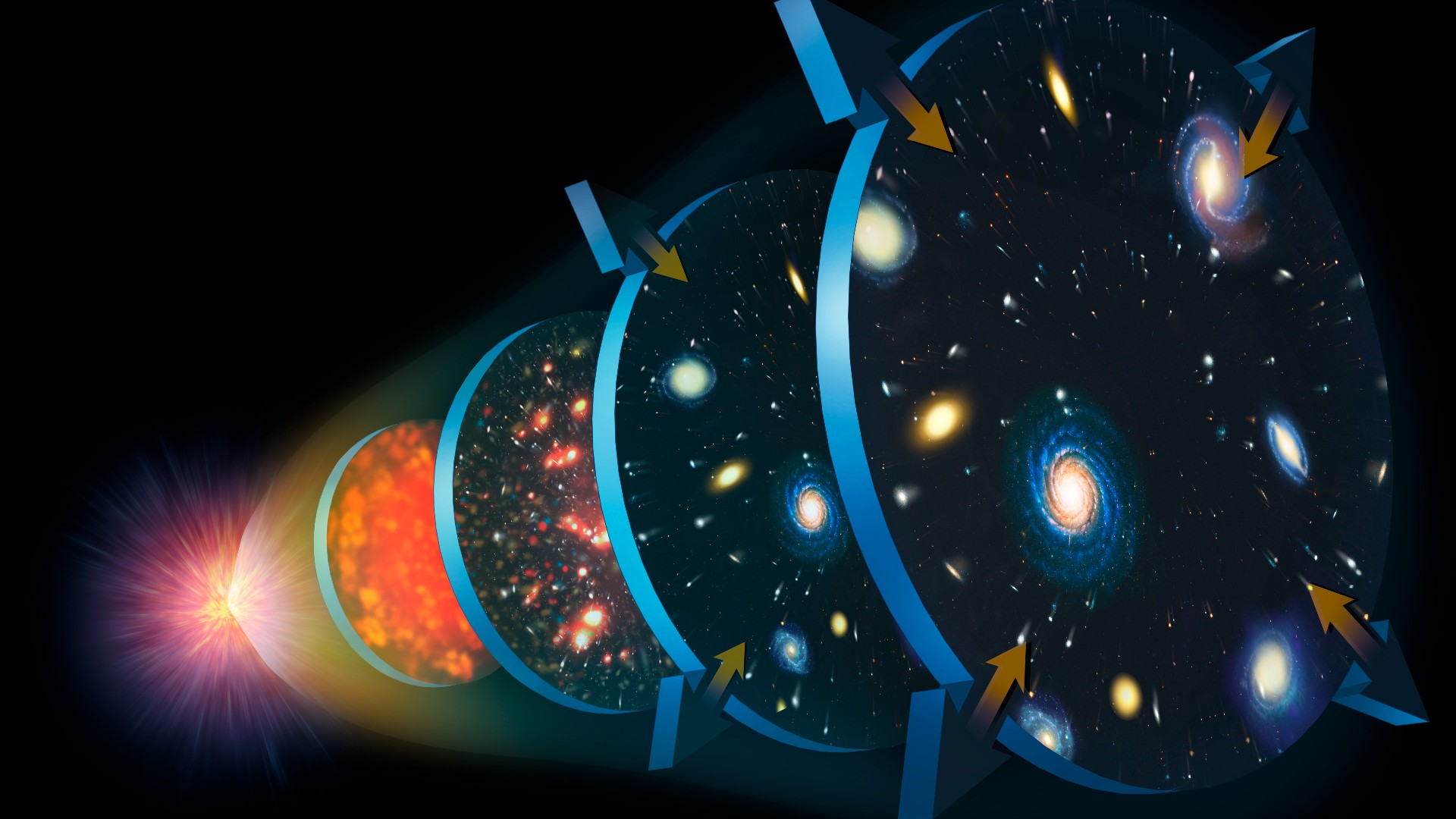What is the gravitational constant?
The gravitational constant is the key to unlocking the mass of everything in the universe, as well as the secrets of gravity.

The gravitational constant describes the intrinsic strength of gravity, and can be used to calculate the gravitational pull between two objects.
Also known as "Big G" or G, the gravitational constant was first defined by Isaac Newton in his Law of Universal Gravitation formulated in 1680. It is one of the fundamental constants of nature, with a value of (6.6743 ± 0.00015) x10^–11 m^3 kg^–1 s^–2.
The gravitational pull between two objects can be calculated with the gravitational constant using an equation most of us meet in high school: The gravitational force between two objects is found by multiplying the mass of those two objects (m1 and m2) and G, and then dividing by the square of the distance between the two objects (F = [G x m1 x m2]/r^2).
Related: Why is gravity so weak? The answer may lie in the very nature of space-time

Keith Cooper is a freelance science journalist and editor in the United Kingdom, and has a degree in physics and astrophysics from the University of Manchester. He's the author of "The Contact Paradox: Challenging Our Assumptions in the Search for Extraterrestrial Intelligence" (Bloomsbury Sigma, 2020) and has written articles on astronomy, space, physics and astrobiology for a multitude of magazines and websites.
The gravitational constant is the key to measuring the mass of everything in the universe.
For example, once the gravitational constant is known, then coupled with the acceleration due to gravity on Earth, the mass of our planet can be calculated. Once we know the mass of our planet, then knowing the size and period of Earth's orbit allows us to measure the mass of the sun. And knowing the mass of the sun allows us to measure the mass of everything in the Milky Way Galaxy interior to the sun's orbit.
Measuring the gravitational constant
The measurement of G was one of the first high-precision science experiments, and scientists are searching for whether it can vary at different times and locations in space, which could have big implications for cosmology.
Breaking space news, the latest updates on rocket launches, skywatching events and more!
Arriving at a value of 6.67408 x10^–11 m^3 kg^–1 s^–2 for the gravitational constant relied on a rather clever eighteenth-century experiment, prompted by surveyor's attempts to map the border between the states of Pennsylvania and Maryland.
In England, the scientist Henry Cavendish (1731–1810), who was interested in calculating the density of the Earth, realized that the surveyor's efforts would be doomed to failure because nearby mountains would subject the surveyors' 'plumb-bob' (a tool that provided a vertical reference line against which the surveyors could make their measurements) to a slight gravitational pull, throwing off their readings. If they knew the size of G, they could calculate the gravitational pull of the mountains and amend their results.
So Cavendish set about making the measurement, the most precise scientific measurement made up to that point in history.
His experiment was referred to as the 'torsion balance technique'. It involved two dumbbells that could rotate around the same axis. One of the dumbbells had two smaller lead spheres connected by a rod and hanging delicately by a fiber. The other dumbbell featured two larger 348-pound (158-kilogram) lead weights that could swivel to either side of the smaller dumbbell.
When the larger weights were positioned close to the smaller spheres, the gravitational pull of the larger spheres attracted the smaller spheres, causing the fiber to twist. The degree of twisting allowed Cavendish to measure the torque (the rotational force) of the twisting system. He then used this value for the torque in place of the 'F' in the equation described above, and along with the masses of the weights and their distances, he could rearrange the equation to calculate G.
Can the gravitational constant change?
It is a source of frustration among physicists that "Big G" is not known to as many decimal points as the other fundamental constants. For example, the charge of an electron is known to nine decimal places (1.602176634 x 10^–19 coulomb), but G has only been accurately measured to just five decimal points. Frustratingly, efforts to measure it to greater precision don't agree with one another.
Part of the reason for this is that the gravity of things around the experimental apparatus will interfere with the experiment. However, there's also the niggling suspicion that the problem isn't simply experimental, but that there could be some new physics at work. It is even possible that the gravitational constant isn't quite as constant as scientists thought.
Back in the 1960s, physicists Robert Dicke — whose team was scooped to the discovery of the cosmic microwave background (CMB) by Arno Penzias and Robert Wilson in 1964) — and Carl Brans developed a so-called scalar-tensor theory of gravity, as a variation of Albert Einstein's general theory of relativity. A scalar field describes a property that can potentially vary at different points in space (an Earthly analogy is a temperature map, where the temperature is not constant, but varies with location). If gravity were a scalar field, then G could potentially have different values across space and time. This differs from the more accepted version of general relativity, which posits that gravity is constant across the universe.
Motohiko Yoshimura of Okayama University in Japan proposed that a scalar-tensor theory of gravity could link cosmic inflation with dark energy. Inflation occurred fractions of a second after the birth of the universe, and spurred a brief but rapid expansion of space that lasted between 10^–36 and 10^–33 seconds after the Big Bang, inflating the cosmos from microscopic to macroscopic in size, before mysteriously shutting off.
Dark energy is the mysterious force that is accelerating the expansion of the universe today. Many physicists have wondered if there could be a connection between the two expansionist forces. Yoshimura suggests that there is — that they are both manifestations of a gravitational scalar field that was a lot stronger in the early universe, then weakened, but has come back strong again as the universe expands and matter becomes more spread out.
However, attempts to try and detect any significant variations in G in other parts of the universe have so far found nothing. For example, in 2015, the results of a 21-year study of the regular pulsations of the pulsar PSR J1713+0747 found no evidence for gravity having a different strength compared to here in the Solar System. Both the Green Bank Observatory and the Arecibo radio telescope followed PSR J1713+0747, which lies 3,750 light years away in a binary system with a white dwarf. The pulsar is one of the most regular known, and any deviation from "Big G" would have quickly become apparent in the period of its orbital dance with the white dwarf and the timing of its pulsations.
In a statement, Weiwei Zhu of the University of British Columbia, who led the study of PSR J1713+0747, said that "The gravitational constant is a fundamental constant of physics, so it is important to test this basic assumption using objects at different places, times, and gravitational conditions. The fact that we see gravity perform the same in our solar system as it does in a distant star system helps to confirm that the gravitational constant truly is universal."
Additional Resources
Explore gravity in more detail with a review of the laboratory tests on gravity conducted by the Eöt-Wash group at the University of Washington. Read a review of attempts to measure 'Big G' and what the results might mean.
Bibliography
"Precision measurement of the Newtonian gravitational constant." Xue, Chao, et al. National Science Review (2020).
"The Curious Case of the Gravitational Constant." Proceedings of the National Academy of Sciences (2022).
"Henry Cavendish." Britannica (2022).
Follow Keith Cooper on Twitter @21stCenturySETI. Follow us on Twitter @Spacedotcom and on Facebook.

Keith Cooper is a freelance science journalist and editor in the United Kingdom, and has a degree in physics and astrophysics from the University of Manchester. He's the author of "The Contact Paradox: Challenging Our Assumptions in the Search for Extraterrestrial Intelligence" (Bloomsbury Sigma, 2020) and has written articles on astronomy, space, physics and astrobiology for a multitude of magazines and websites.


